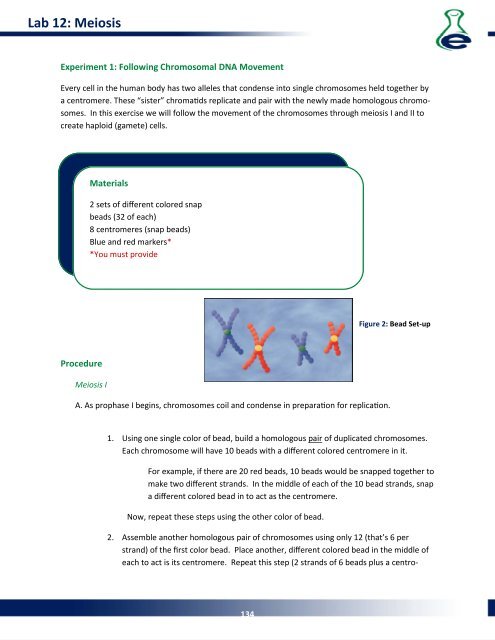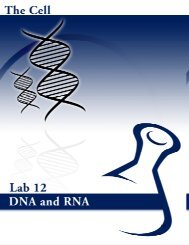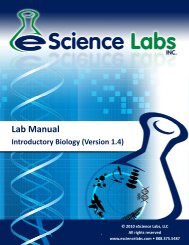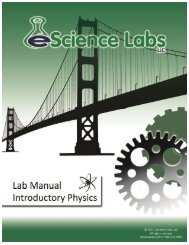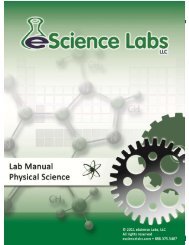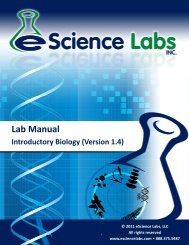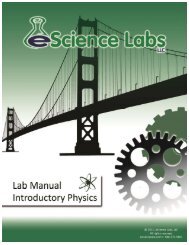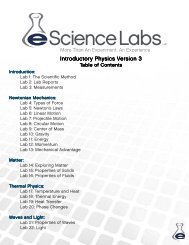Lab Manual - eScience Labs
Lab Manual - eScience Labs
Lab Manual - eScience Labs
Create successful ePaper yourself
Turn your PDF publications into a flip-book with our unique Google optimized e-Paper software.
<strong>Lab</strong> 12: Meiosis<br />
Experiment 1: Following Chromosomal DNA Movement<br />
Every cell in the human body has two alleles that condense into single chromosomes held together by<br />
a centromere. These “sister” chromads replicate and pair with the newly made homologous chromosomes.<br />
In this exercise we will follow the movement of the chromosomes through meiosis I and II to<br />
create haploid (gamete) cells.<br />
Materials<br />
2 sets of different colored snap<br />
beads (32 of each)<br />
8 centromeres (snap beads)<br />
Blue and red markers*<br />
*You must provide<br />
Figure 2: Bead Set-up<br />
Procedure<br />
Meiosis I<br />
A. As prophase I begins, chromosomes coil and condense in preparaon for replicaon.<br />
1. Using one single color of bead, build a homologous pair of duplicated chromosomes.<br />
Each chromosome will have 10 beads with a different colored centromere in it.<br />
For example, if there are 20 red beads, 10 beads would be snapped together to<br />
make two different strands. In the middle of each of the 10 bead strands, snap<br />
a different colored bead in to act as the centromere.<br />
Now, repeat these steps using the other color of bead.<br />
2. Assemble another homologous pair of chromosomes using only 12 (that’s 6 per<br />
strand) of the first color bead. Place another, different colored bead in the middle of<br />
each to act is its centromere. Repeat this step (2 strands of 6 beads plus a centro-<br />
134


